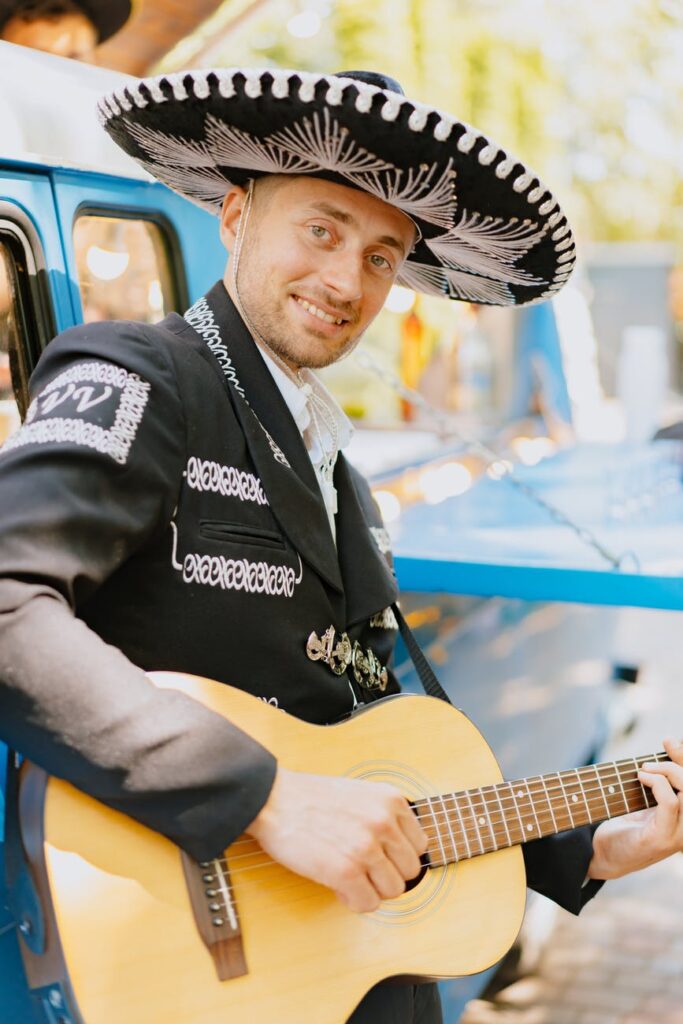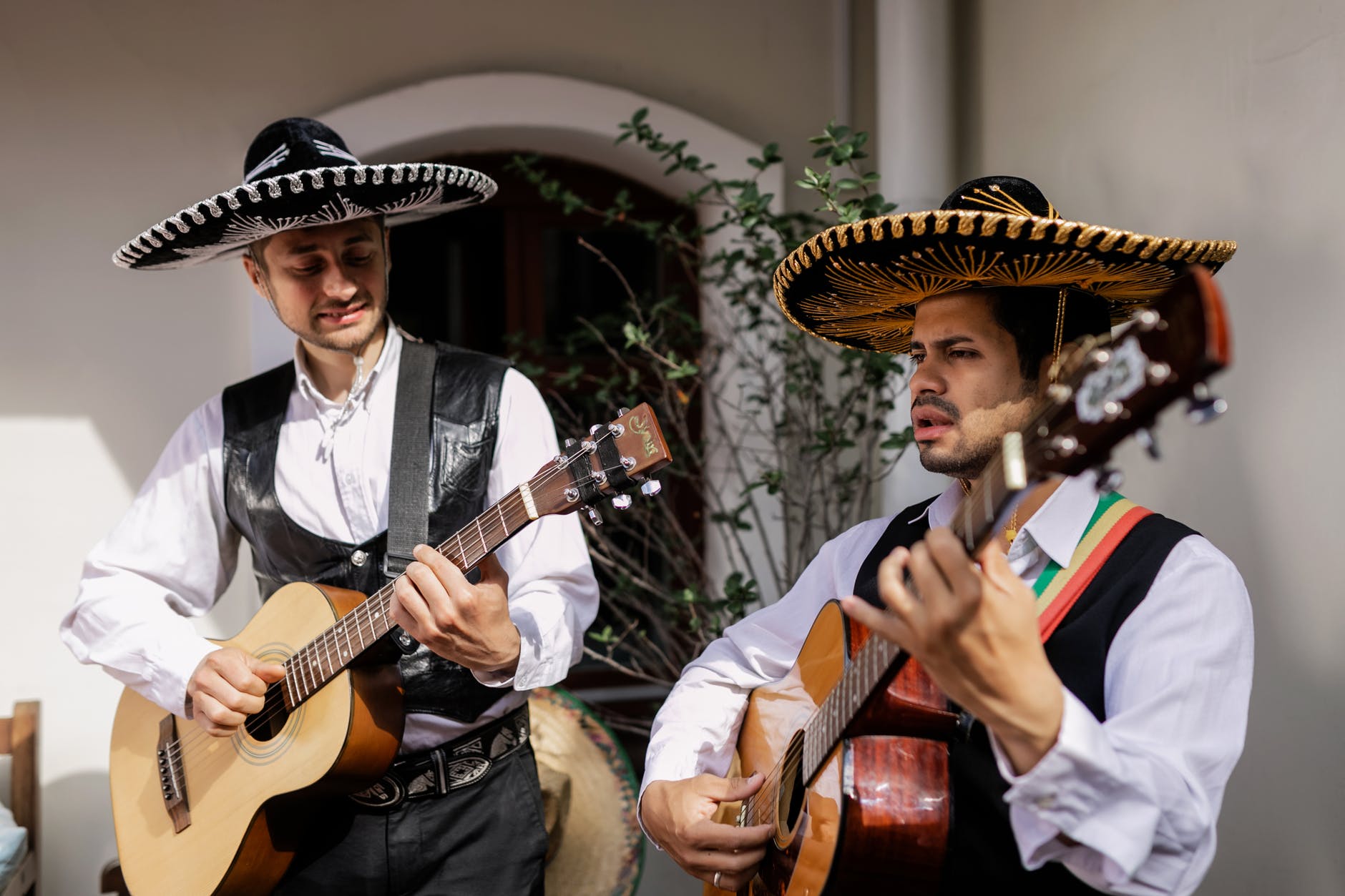For centuries, the Sombrero has represented the image of Mexicans in the rest of the world. And hats have always been an essential part of Mexican culture. Although it’s basically Mexican, you can still see people from different countries, men specifically, wearing a sombrero. Not only that, but many are curious about it, too.

The Sombrero is a felt or straw hat with a wide brim and a high crown famous in Spain, Mexico, and the southwestern United States. And it actually gets its name from the Spanish word Sombra, which means shade. Interesting!
Now, let’s get to know this type of hat. And let’s unravel some facts if you ever want to try and buy yourself a sombrero.
What Is a Sombrero Hat?
The Mexican Sombrero is a wide-brimmed hat of straw, felt, or velvet with brightly colored patterns. Its purpose is to safeguard the person wearing it from the sun during long days of desert work. The sombrero also has a slightly pointed center shape. You’ll notice that a wide brim is surrounding it. Also, it may be mildly upturned at the edge. It can be loosely woven golden straw with an unfinished edge or ornate. I can also have a silky embossed cord, silver threads, and velvet lining.
This notable Mexican culture and labor icon can be traced to the vaqueros (horseman), farmers, and mariachi musicians. The Sombrero may represent the most renowned guitarist in a mariachi band or the farmer managing to his fields twelve hours a day.
Sombrero hats have also long been associated with Mexico’s official folk dance, the Jarabe Tapatio.
History of Sombrero Hat
In the early history of Mexican culture, sombrero hats were created out of a need. Some native Central Americans and European immigrants began to settle there in the 17th century. And because they are battling with the harsh sun for the entire year, they quickly sought simple ways to provide protection to heat. They were able to make a protection against what was seems to be a very desolate and harsh environment.
Hats imported from Europe were among the most popular alternatives for sun protection. Still, they were insufficient against the strong Mexican sun, particularly for workers who had to stay outside all day. Mexican natives and immigrants quickly began making hats with ever-wider brims. Those hats rapidly became an iconic clothing item for the entire country.
Take note that the term “sombrero” refers to any hat with a brim in Spanish-speaking countries.
Types of Sombrero Hats
Sombreros can indicate a wearer’s social and economic status in addition to providing shade from the hot Central American sun. Sombreros for commoners are made of straw, whereas more expensive ones are made of felt. But even so, hat-makers craft each hat in various colors, designs, and patterns. And usually, some sombrero makers use golden fiber and other materials to decorate it.
The cheapest sombreros have a narrower brim. Hat-makers usually use straw or another lightweight material to make a hat that field workers can wear while working in the sun. As the hat becomes more expensive, it usually becomes heavier. They have a wider brim, which provides better sun protection. It even allows the person wearing to protect their outfits from rain.
Sombreros are now classified into several types. So, we’ll take you on a tour of the various styles of Mexican sombreros. Such are vary by region and are produced from various materials for a wide range of purposes.
Calentano
The Calentano hat is from the Tierra Caliente, or the hot earth region of Mexico. You’ll notice that a black ribbon is securing it as the side of the hat is turning up a little. However, the hat is already created with upward curving sides to retain its shape even when the ribbon is untied.
Some say that the origin of this hat style is in Tlapehuala, Guerrero, where the natural palm is plentiful. And dried palm leaves are the major material in creating this hat, giving it its beige color. The most expensive hand-sewn types of this hat are by far the most labor-intensive.
Charro
In the minds of the rest of the world, the charro is quite probably the most popular Mexican hat. This Sombrero has a broad flat brim, and a high top that looks like two giant fingers squeezed it. You’ll most often see mariachi musicians wearing a version of this hat, often with brims extending further than the initial charro design. The difference is that this is always embossed and adorned with gold and silver threads, beads, sequins, and other eye-catching components.
Charrería is a rodeo-style competition that includes horsemanship, dances, and equestrian techniques regarded as the Mexican national sports. And you’ll notice that its participants, known as charros, wear this type of hat.
Tejano
Because it is popular in northern Mexico and the Southwest of the United States, people regard this hat as a “Texan” or “Northern” hat. It has mildly upturned sides, although not quite as marked as the Calentano. It also has a deep impression in the shape of an arrow on the top. This is the classic style that you can see in old Westerns, and you can still see it on cowboys’ heads in Mexico’s northwestern region. It is also interesting to know that hat-makers typically use animal skin to make Tejano hats. Another distinct characteristic of this hat is that it has a thin broad-base band.
Jipijapa
Hats crafted from jipi, a type of short palm native to Mexico, are almost entirely produced in Bécal, a town in the Mexican state of Campeche. The conventional version of this hat is the Panama hat. Still, the first of its kind was made in Mexico.
The Bécal families, of which there aren’t many, have become well-known for their skill sets as hat and basket makers. Each family has a cave built into the back of their homes or off their patios, some of which have sculptures out of the local limestone rock common in the area.
The Bottom Line
Despite the Sombrero’s long and illustrious history, the present vision of this hat outside of Mexico is frequently that of a parody. Many people see it as a fun accessory, a novelty item, a travel souvenir, and cheap prevention when they need to hide from the sun instantly. Native Mexicans, on the other hand, are fighting to preserve the rich history, heritage, and cultural significance that this well-known accessory has acquired. Today, you’ll see people celebrating sombreros in various festivals, name-days, traditional music pieces, and dances throughout Mexico.
READ ALSO: Outback Hat: What is It and How to Wear It?
